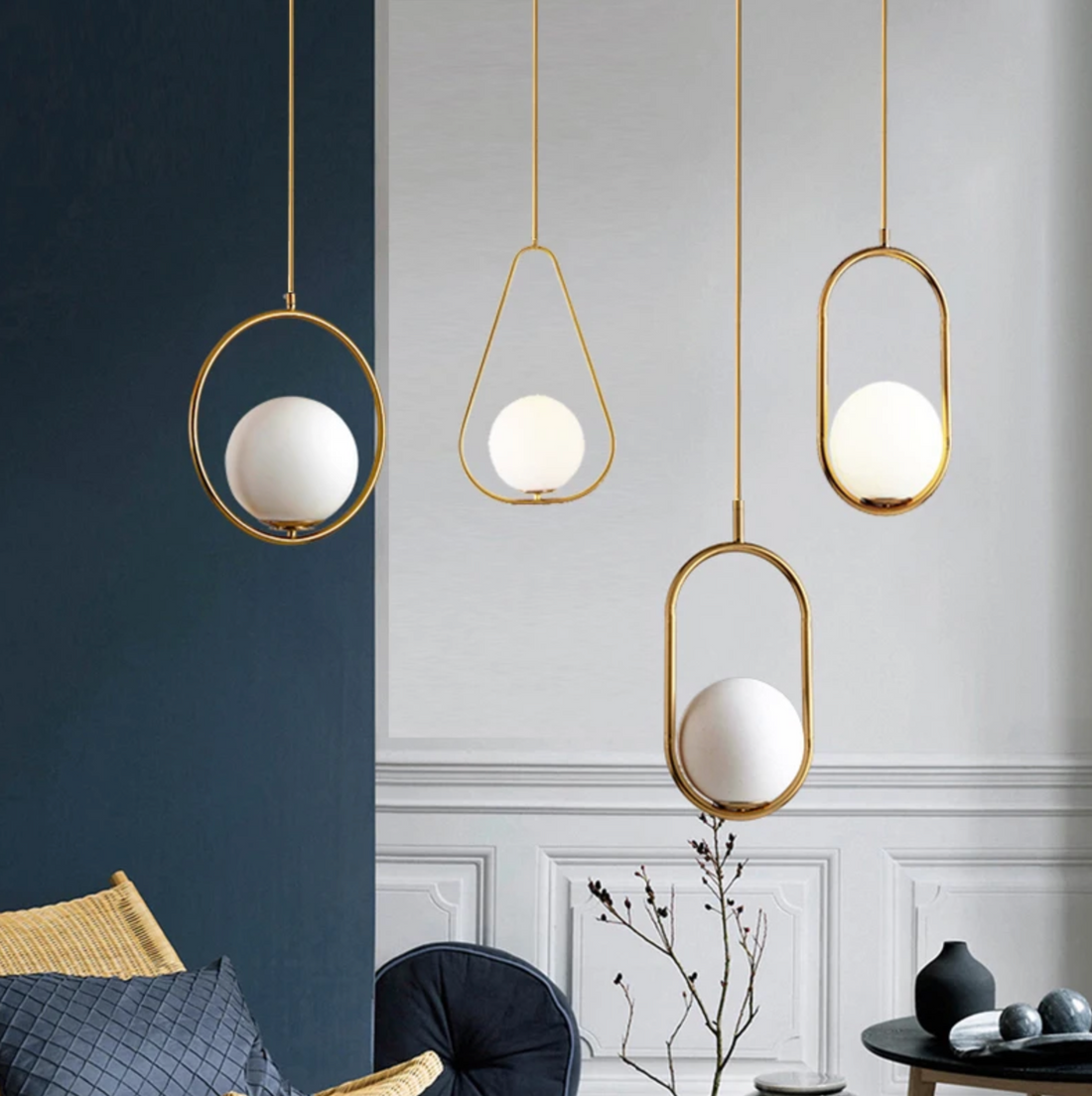
What Is a Pendant Light?
Pendant lights are a wonderful addition to any space as they add a touch of elegance and are functional at the same time. They hang from the ceiling by a cord, a chain or a rod which allows them to be used as decorative pieces in conjunction with serving as a light source which has made them a common choice in interior interior decor.
Key Features of Pendant Lights
1. Design: Pendant lights come in a variety of shapes, sizes, and materials. From sleek, minimalist globes to ornate, vintage-inspired designs, there’s a pendant light to suit every taste and decor style.
2. Placement: These lights are often used to create focused lighting over specific areas such as kitchen islands, dining tables, or entryways. They can also be grouped together for a dramatic visual impact.
3. Adjustable Heights: Most pendant lights feature adjustable cords or rods, allowing you to customize the height to fit your space and needs.
4. Illumination: Depending on the shade and bulb type, pendant lights can provide ambient, task, or accent lighting. For example, clear glass shades offer widespread illumination, while metal shades focus light downward.
Common Types of Pendant Lights
-
Mini Pendants: Compact and perfect for adding subtle light, mini pendants work well in small spaces or as part of a cluster.
-
Drum Pendants: Featuring a cylindrical or drum-shaped shade, these are ideal for creating soft, diffused light in dining rooms or bedrooms.
-
Globe Pendants: With a spherical design, globe pendants add a modern and sophisticated touch to any room.
-
Linear Pendants: These lights feature multiple bulbs arranged in a line, making them great for illuminating long surfaces like kitchen islands or dining tables.
-
Industrial Pendants: Inspired by vintage factory lighting, industrial pendants often feature metal shades and exposed bulbs for a rugged, stylish look.
Benefits of Pendant Lighting
-
Versatility: Suitable for virtually any room, pendant lights can complement a range of design styles from farmhouse to contemporary.
-
Space-Saving: Unlike floor lamps or table lamps, pendant lights don’t take up any floor or surface space, making them ideal for smaller areas.
-
Customization: With endless options in design and placement, pendant lights allow you to tailor your lighting scheme to your exact preferences.
-
Focal Point: A well-chosen pendant light can act as a stunning centerpiece in a room, drawing the eye and enhancing the overall decor.
Where to Use Pendant Lights
-
Kitchen: Hang pendant lights above an island or countertop to create focused task lighting for cooking and prep work.
-
Dining Room: A cluster of pendants or a single statement piece above a dining table adds ambiance and elegance.
-
Living Room: Use pendant lights to highlight a seating area or a specific design element, such as a coffee table or art piece.
-
Bedroom: Pendant lights can replace traditional bedside lamps, freeing up space on nightstands.
-
Hallways and Entryways: Welcome guests with a beautiful pendant light that sets the tone for your home’s interior.
Choosing the Right Pendant Light
When selecting a pendant light, consider the following:
-
Size: Ensure the pendant’s size is proportionate to the room and the furniture it’s accentuating.
-
Style: Match the pendant’s design with the overall aesthetic of the space.
-
Lighting Needs: Determine whether you need bright task lighting or softer ambient light.
-
Installation Height: Hang the pendant at an appropriate height to avoid obstructing views or causing glare.
In conclusion, pendant lights are more than just a source of illumination—they are a design statement that can enhance the beauty and functionality of your space. Whether you’re looking for a bold focal point or a subtle addition to your decor, there’s a pendant light that’s perfect for your needs.

